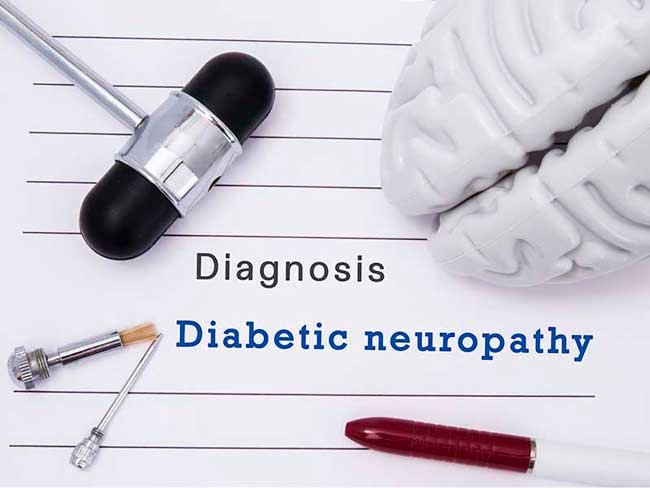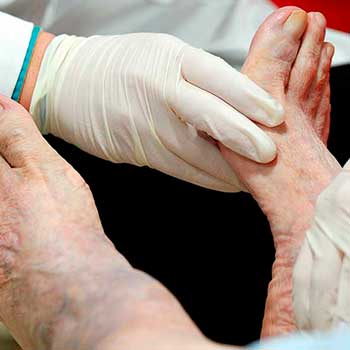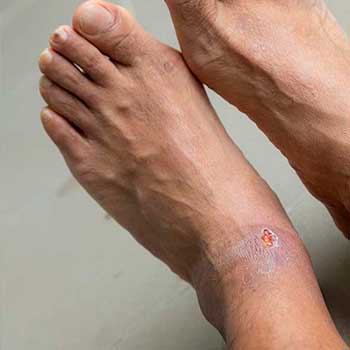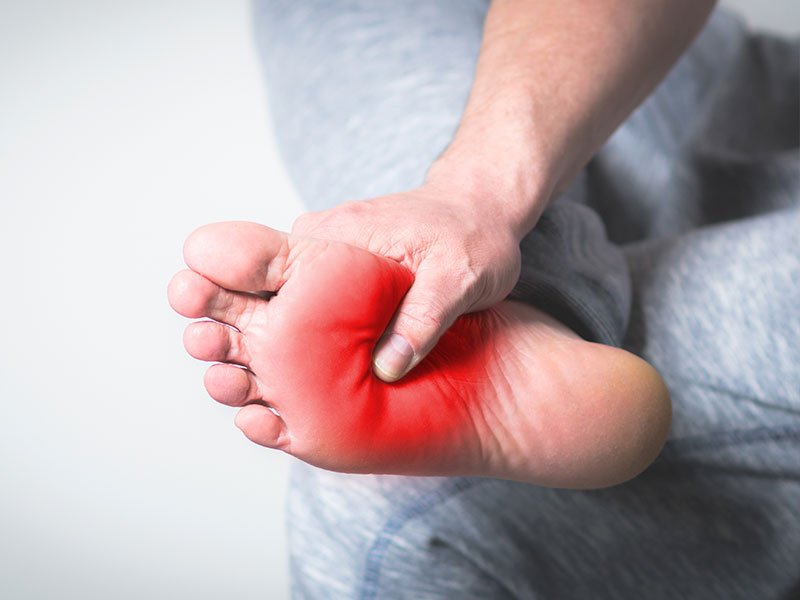
Diabetic Neuropathy
Table of Contents:
What is Diabetic Neuropathy?
What are the Different Types of Diabetic Neuropathy?
Symptoms for Different Types of Diabetic Neuropathy
Does Diabetic Neuropathy get worse over time?
How is Diabetic Neuropathy Diagnosed?
How is Diabetic Neuropathy Treated ?
How successful is the Dr. Alfonso Neuropathy Treatment Protocol for Diabetic Neuropathy?
What is Diabetic Neuropathy?
Peripheral nerve damage as a result of diabetes is referred to as Diabetic Neuropathy. Diabetic patients who have elevated blood sugar (glucose) for extended periods of time cause damage to their peripheral nerves.
The most common location of peripheral nerve damage is in their feet and legs.
Diabetic neuropathy symptoms and functional changes are progressive in with as high blood sugar continues to cause damage to the peripheral nerves.
Symptoms of diabetic neuropathy will vary depending on the type of diabetic neuropathy you have acquired.
The life altering complication of diabetic neuropathy is very serious and affects 60%-70% of people with diabetes.

What are the Different Types of Diabetic Neuropathy?
Diabetic Neuropathy has four main types affecting the peripheral nervous system.
Distal symmetric peripheral neuropathy:
Distal symmetric peripheral diabetic neuropathy is the most common type of diabetic neuropathy. It usually occurs in the legs and feet and progresses next to the fingers, hands and arms. Peripheral nerve damage affects the ability to feel surfaces with your feet due to the loss of sensations (sensory nerve damage).
Autonomic diabetic neuropathy:
Autonomic diabetic neuropathy effects the involuntary fuction of nerves in charge of controlling organs control such as eyes, heart, lungs, stomach, pancreas, intestines, colon, bladder, stomach, intestines, and sex organs.
Proximal diabetic neuropathy (diabetic polyradiculopathy)
Proximal diabetic neuropathy typically affects the peripheral nerves in the thighs, hips, buttocks, legs, ribs cage, abdominal regions. Proximal diabetic neuropathy nerve damage occurs along a specific nerve distribution throughout the body.
Mononeuropathy diabetic neuropathy (focal neuropathy)
Specific nerve damage to a single nerve is referred to as mononeuropathy diabetic neuropathy. The two most common are specific cranial and peripheral nerves.
Diabetic neuropathy patients are a very high risk for injuries (ex: hip fractures) from falls due to difficulties in walking, standing, coordination and balance. Many patients suffering from diabetic neuropathy have tremendous difficulties getting proper rest due to even the best sheets causing pain at night.
Symptoms for Different Types of Diabetic Neuropathy
Diabetic neuropathy symptoms often include:
Burning pain sensation
Sharp Stabbing pains
Pins and Needles
Hypersensitivity sensitivity to llight touch
Numbness
Tingling
Difficulties distinguishing hot and cold temperature changes
Muscle weakness
Decrease in muscle size (atrophy)
Contrictions
Tightness
Cramping
Walking and Standing difficulties
balance and coordination problems
Foot infections, wounds, ulcers
Common symptoms of autonomic diabetic neuropathy may include:
Swelling or bloated feeling
position change dizziness ex: standing up
Increased heart rate
Decreased appetite
Digestive problems
vomiting hours after eating
low blood sugar unawareness
Indigestion/heartburn
Bowel or bladder control difficulties
Decreased or increased perspiration
sexual dysfunction
Common symptoms of proximal diabetic neuropathy:
Pelvic and upper leg pain(hip/thigh/buttock)usually on one side.
Decrease muscle size and strength in the legs.
Pain in the abdominal region.
Muscle atrophy and weakness in the legs.
Difficulty change positions from sitting or lying down to standing up.
Common Symptoms Mononeuropathy diabetic neuropathy may include:
Weakness and numbness in fingers, hand and/or wrist referred to as carpal tunnel syndrome.
Vision problems and/or eye pain typically only on one side.
Vision problems.
Partial face paralysis on side as found with Bell’s Palsy.
Does Diabetic Neuropathy get worse over time?
Diabetic Neuropathy can take a few months for symptoms to improve but some become permanent without proper treatment. Pain and sensory abnormalities may continue for years after the completion of chemotherapy.
Chemotherapy-Induced Peripheral Neuropathy (CIPN) patients may have stopped the cancer but suffer from debilitating peripheral neuropathy induced by cancer treatments.
Chemotherapy-Induced Peripheral Neuropathy (CIPN) can be very debilitating and affect the ability to function or feel good mentally, physically, and socially. Many cases are not usually permanent and improve after the chemotherapy treatment is completed.


How is Diabetic Neuropathy Diagnosed?
A doctor can typically diagnose diabetic neuropathy by performing a physical exam, medical history and combined with your symptoms and functional complaints.
Dr. Alfonso performs a diabetic neuropathy consultation to understand your symptoms and any functional changes you are experiencing. Once completed a diabetic neuropathy neurological and physical examination to confirm your diagnosis and formulate an individualized treatment plan. During your diabetic neuropathy exam he will analyze the motor and sensory function of the peripheral nerves with specialized tests. Testing
for muscle size, strength, reflexes, coordination, balance, ability to differentiate sensations hot,cold, vibration,light touch, dull, and sharp.
size and tone, reflexes, balance and coordination, and study your ability to feel sensations (vibrations, hot, cold, shap, dull, light touch). Dr. Alfonso will also decide from the exam if additional advanced testing is needed to help diagnose diabetic neuropathy. After the diabetic neuropathy exam, Dr. Alfonso will analyze your results and decide if you are a good candidate for his care and design a treatment plan using the Dr. Alfonso Neuropathy Treatment Protocol.
How is Diabetic Neuropathy Treated ?
Dr. Alfonso‘s Neuropathy Treatment Protocol is a highly successful drugless, non-invasive, safe, and effective treatment that has successfully helped many patients who suffer from Diabetic Neuropathy.
Dr. Alfonso‘s Neuropathy Treatment Protocol combines multiple specialized therapies designed to increase nutrients and oxygen to damaged nerve tissues by increasing circulation to the nerves combined with treatments to stimulate natural nerve repair and healing at a cellular level.
Please click on the treatment link and visit our treatment page to learn more about the Dr. Alfonso Neuropathy Treatment Protocol and our unique therapies for rehabilitating damaged peripheral nerves as a result of diabetic neuropathy.
How successful is the Dr. Alfonso Neuropathy Treatment Protocol for Diabetic Neuropathy?
We see an estimated successful 85% improvement rate in our patients. Every patient’s case is unique with their own specific complicating factors and results vary depending on compliance to care, chronicity and other health conditions. Our patients report diabetic neuropathy symptom and functional loss improvements such as burning, sharp Stabbing pain, pins and needles, numbness and tingling, improved balance and walking abilities, more restful sleep and the ability to enjoy normal life activities with friends and family.
Unfortunately, Traditional medicine has no cure for diabetic neuropathy. Patients are typically prescribed powerful drugs that do not treat the underlying cause of the damaged nerves and only numbs the pain and symptoms. Most patients cannot tolerate long-term drug use and side effects. Many patients feel they have no other option for diabetic neuropathy.






